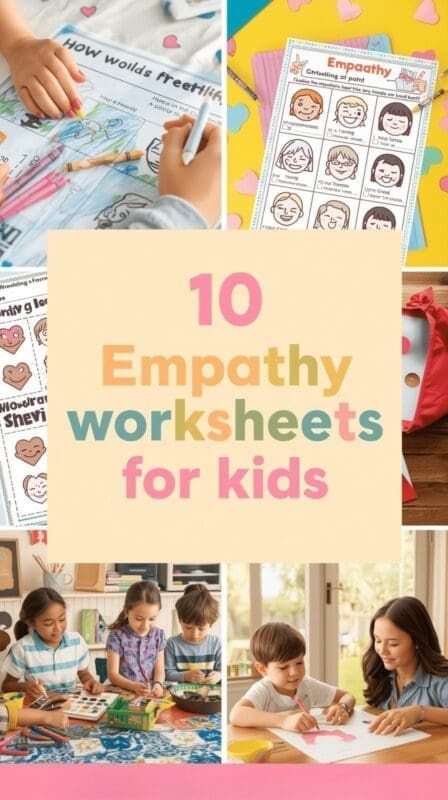Empathy — the ability to understand and care about how others feel — is one of the most important social-emotional skills kids can learn. But teaching empathy doesn’t have to be complicated. With the right worksheets and creative activities, children can explore feelings, practice perspective-taking, and strengthen their ability to connect with others.
Here are empathy worksheets for kids that counselors, teachers, and parents can use to nurture compassion in classrooms or at home.
Why Worksheets Help Teach Empathy
- Visual & Simple: Worksheets break down big concepts into kid-friendly activities.
- Practice Perspective-Taking: Kids try on another person’s point of view.
- Encourages Reflection: Writing and drawing give time to think about feelings.
- Works Anywhere: Perfect for classrooms, counseling, or home SEL practice.
1. Feelings Detective Worksheet
How it works:
- Kids look at cartoon faces showing different emotions.
- They circle the feeling and write or draw what might have caused it.
Why it helps: Builds emotional recognition, the first step in empathy.
2. Walk in Their Shoes Worksheet
How it works:
- Kids draw themselves and then another person (a friend, sibling, or classmate).
- Prompts: “How do they feel?” “What would you do to help them?”
Why it helps: Encourages perspective-taking and compassionate responses.
3. Empathy Comics
How it works:
- Blank comic strip with a situation (e.g., a child drops their lunch).
- Kids draw what happens next — first without empathy, then with empathy.
Why it helps: Highlights the difference between ignoring vs. helping.
4. Gratitude & Empathy Journal Page
How it works:
- Prompts like: “One kind thing someone did for me…” and “One kind thing I did for someone…”
Why it helps: Connects empathy with gratitude and reciprocity.
5. Empathy Reflection Wheel
How it works:
- A printable wheel with sections: What happened? How did they feel? How would I feel? What could I do?
- Kids fill in with words or drawings.
Why it helps: Creates a structured routine for reflection after conflicts or challenges.
Tips for Counselors & Teachers
- Pair worksheets with role-play or discussion for deeper learning.
- Keep language age-appropriate (use emojis or symbols for younger kids).
- Celebrate kids when they use empathy in real situations.
Final Thoughts
Empathy worksheets give children a hands-on way to explore feelings, practice perspective-taking, and reflect on kindness. Whether through comics, wheels, or journals, these activities make empathy more than a word — they make it a daily practice.
For more tools, explore my guides on Creative Empathy Activities for Kids and Valentine’s Day SEL Crafts That Teach Kindness.

About the Author
Hi, I’m Eve, a former school counselor with a master’s degree in School Psychology and a passionate advocate for children and families navigating sensory challenges. As a mom of children with sensory sensitivities, I deeply understand the journey special-needs parents face, and I dedicate myself to researching and sharing practical solutions to help children thrive and feel comfortable in their bodies. My goal is also to empower counselors, therapists, and psychologists with creative strategies and supportive resources to enrich their everyday practice. When I’m not writing or exploring new therapeutic approaches, you’ll find me spending quality time with my family and continually seeking inspiration from everyday moments.



